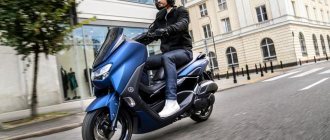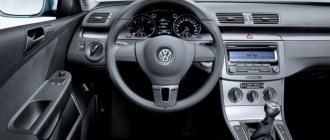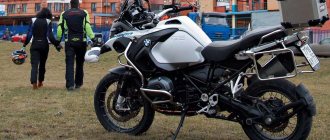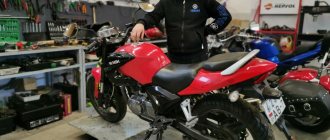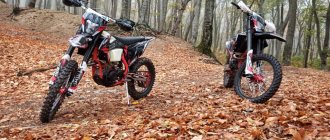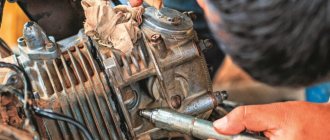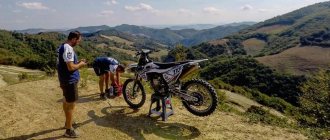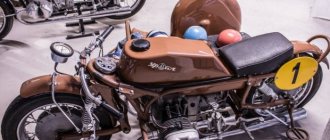November has arrived, and with it the end of the 2020 motorcycle season. Even the most reckless motorcyclists have already put their “sports” and naked bikes in their garages - riding has become cold, slippery, and dangerous. No pleasure.
The author of the material also said goodbye to his 310 until spring and immediately became sad - I really don’t want to forget about the pleasure of riding a motorcycle for six months.
The following is a text from Denis Logunovich, Onliner.by.
Out of desperation, I began to study specialized websites and specialized YouTube channels on the topic of winter rides on two-wheeled vehicles. It turns out that there is a class of motorcycles for which the season never ends. This is enduro. In winter they are even more interesting to drive. But only off-road. If you thought that you would find in this article instructions on how to drive 150 km/h along the avenue in a snowfall on a Yamaha R1, then close the page. Enduro is a different world. A world of ugly, dirty motorcycles that girls don’t take pictures next to. To study the issue in more depth, I took several enduro riding lessons. Before this, I had never ridden a motorcycle off the asphalt.
How is enduro different from cross-country?
Let's take a look at classes right away. Enduro is a huge segment that includes various models from light off-road motorcycles to heavy touring enduros like the BMW R1250 GS, KTM 1290 Super Adventure or Honda Africa Twin. Racing through snowdrifts on a Bavarian “Goose” is a so-so idea, so fans of winter motorcycling prefer light enduro bikes, which sometimes are not even registered. The average person will easily mistake such a motorcycle for a motocross bike. What's the difference?
— The enduro motorcycle has an electric starter and a soft suspension, which allows you to jump over logs and comfortably move through pits and bumpy forest roads. Cross models do not have a battery or lighting equipment. Everything has been done there to reduce weight. And their suspension is stiffer. I note that enduro models also come without headlights and turn signals, but then they are considered sports equipment and cannot be registered,” instructor Gennady, who organizes amateur enduro rides near Minsk, told Onliner.
The sports disciplines of motocross and enduro competitions are also different. Cross -country is a closed track created artificially. There are spectacular flights and beautiful turns. In general, motocross is a high-speed and dynamic sport, including for spectators. Enduro is primarily of interest to the rider. Enduro competitions can have tracks that are tens of kilometers long, and riders don't always know what awaits them around the next corner. Obstacles can range from river mouths, logs and steep slopes. Endurists often ride through the forest. International competitions usually take place in picturesque locations. It is customary to single out motorcycle trials (strange bikes without seats), but this is too narrow a segment.
In short, motocross is a closed track where athletes race lap after lap, while enduro is off-road racing with a variety of obstacles.
home / Useful / What is “enduro”? - part 1 /Recently, more and more people are beginning to pay attention to this class of motorcycles, such as enduro. Some are tired of riding exclusively in those places where they can feel at least half of its capabilities on their favorite sportbike, others are tired of beating their insides on cruisers, moving along our directions, conventionally called roads. And someone, perhaps, has already tried enduro and appreciated the additional freedom that this class of motorcycle equipment, which is not very attractive in appearance, gives. This article is intended for those who want to buy an enduro, but do not know where and how to choose.
A LITTLE HISTORY
In order to better understand the features of the enduro class, it is worth remembering a few moments from the history of this sport.
The first official motorcycle races were held in 1899. in Vienna. 5 years later, on July 8, 1904, the International Federation of Motorcycle Clubs (FICM), the predecessor of the current FIM, was founded. On the initiative of this organization, large international motorcycle competitions for endurance and endurance - enduro - began to be held.
In 1912, the FICM decided to hold the first annual International Motorcycle Six Day Enduro event in Great Britain the following year. The first competitions were attended by enthusiasts and hobbyists using production road motorcycles.
The best athletes represented their countries at the International Six-Day Motorcycle Competition for the "International Trophy", later called the "World Trophy". The country whose team won the International Trophy received priority rights to organize the next annual International Six-Day Competition.
Over time, the FIM made changes and additions to the competition rules. For example, in 1961 a number of changes were introduced in order to increase the purely sporting significance of the competition and safety on the route. The number of special tests has increased to 11, including: two types of acceleration and braking tests, two - acceleration with a sliding finish, three hill races, three cross-country races and the already famous one-hour race. Later, high-speed sections were introduced into the competition. The six-day competition became even more complex, involving the use of equipment in different road conditions (primarily severe off-road).
It is worth emphasizing the key points of the six-day enduro competition, which shaped the requirements for the design and technical characteristics of motorcycles. The route was laid out so that its passage would be a test for both equipment and athletes. The route was marked with arrows, and before the start of the race it was kept secret: all riders, including representatives of the organizing country, did not have the right to preview the route! Each stage was divided into separate sections, the passage of which was controlled for regularity of movement. Outside assistance to the rider, except for refueling and oil, was prohibited. In addition, after a preliminary inspection before the start of the competition and after each day's stage, the motorcycles were locked in the garage. Reliability comes first!
Enduro motorcycles (from the French endurance - endurance) trace their origins to sports competitions, the so-called “six days”. In them, racers have to independently, without technical support, cover hundreds of kilometers of route in each of the six days of the run in any condition of the surface (outright off-road, including), which left its mark on the design and ideology of these devices. An enduro is not a random motorcycle, not a motorcycle with one cylinder from a sportbike, or even a cross bike, but a “weak” one.
You can often hear comparisons between enduro motorcycles and cross-country motorcycles, apparently due to their great external similarity. But you need to understand that cross-country is a heavy-duty, but much narrower discipline. In cross-country, everything takes place on a track with artificially created obstacles (jumps, combs, etc.) and with a uniform dirt surface. The track is familiar to the riders, at least they have the opportunity to drive it, and often conduct training. Cross-country competitions consist of two short races (30 minutes in classic and 15 minutes in supercross).
Enduro has much broader requirements. The motorcycle is specifically designed to be more versatile so that it can cope with a variety of road conditions, which are often obstacles in themselves, and also change quickly. Thus, the route can pass through dirt and gravel roads and paths, sections of asphalt roads, and mountain rivers. An athlete must be prepared for anything in any weather. And the length of the races can reach 300-500 km - such kilometers that the very fact of reaching the finish line is already a victory!
In addition to the classic ones, there is a class of so-called heavy enduro , which are often two-cylinder . They originate from rally-raid motorcycles, so calling them enduro is not entirely correct. This class of motorcycles was born in the mid-1980s, when Yamaha and Honda fought a fierce battle in the Dakar races. Special stages for rally raids are usually laid out on dirt roads, with relatively flat roads, and, sometimes, directly through dunes, and the links are asphalt. Sometimes riders have to cover up to 1000 km in different modes per day, which is very difficult on a classic enduro. Therefore, the need arose to create equipment adapted to these conditions.
A rally motorcycle has a long wheelbase so that the extra handling in these races does not tire the pilot so much. Additional stability is given by the heavy weight - the price for the huge tanks, which reached a capacity of 60 liters. The developed body kit is designed to create comfort at high speed. Rally motorcycles have a low front fender - something special, but you won’t find dirt in the Sahara. The landing also changed - the huge tank displaced the pilot from his usual place in the center of mass on a classic enduro, almost to the rear wheel, and this is not accidental. This landing allows you not to change your body position when driving on sand - one might say, standard soil in rally raids.
SUSPENSION AND WEAR BODY
Enduro frames are always steel , more often simple monotube, sometimes half-duplex. They are far from the ideal stiffness inherent in sports and modern motocross motorcycles, but they don’t need it. Tiring, hypersensitive handling is deliberately sacrificed for the ability to confidently maintain the chosen course without spending extra effort. This is exactly what a slightly playful frame allows you to do, the repair of which is also simple. The body kit, and the entire enduro design, is designed to withstand inevitable falls. Therefore, it is quite difficult to damage anything other than mirrors and levers. Plastic too: painted in bulk, it bends but does not break, and scratches and other “battle scars” on it are not very noticeable.
Enduro suspensions have less travel and are usually softer than motocross suspensions. They are not designed for extreme jumps; their task is to enable you to move quickly and safely over any uneven surfaces. Of course, you can also jump on enduro, but not as high as on cross-country bikes.
Features common to crossbike bikes are a large front wheel and wide handlebars , which make it easier to control the bike on uneven surfaces. The wheels, with the exception of some SUVs (see below), are spoked. They are absolutely repairable and can withstand significant deformation during strong impacts, which are inevitable when moving along the “pampas”. The characteristic high wing prevents dirt from filling the space between it and the wheel, blocking the latter. The external difference between an enduro and a cross-country bike is the presence of a complete (or incomplete) set of lighting equipment, mirrors and a minimum set of instruments.
MOTORS
Just like cross bikes, enduro bikes, as a rule, have single-cylinder engines , which is due to the requirement for both reliability and traction characteristics. The engine of endurikes is almost always four-stroke and is not as boosted as a motocross engine ; here, power at the top is usually sacrificed for traction at the bottom and an increased resource. The best traction is at low and medium speeds , and at the top it drops noticeably. Thanks to this feature, enduros are ahead of even larger-displacement four-cylinder road motorcycles when starting from a standstill.
The classic “endurance” engine is air-oil cooled and has a so-called dry sump. In it, oil does not accumulate in the pan, but is constantly pumped by two oil pumps. It is this design of the oil system that allows the engine to operate without destructive consequences, in any position, even upside down, plus it is possible to significantly reduce the size of the engine and cool it more efficiently. A typical enduro engine has one or more balancer shafts to dampen the vibrations generated by the movement of the single piston. The nature and use of the motorcycle significantly depends on its cubic capacity.
RUBBER
To fully realize off-road capabilities, tires are very important. The wrong choice can almost completely destroy the off-road potential of the motorcycle.
Rubber is almost the main headache of endurists, especially with mixed asphalt-soil use. The most radical solution is to have two sets: use a universal one to ride where roads predominate, and change to a cross-country shoe if you need to cover a significant distance off-road.
CLASSIFICATION
The character and capabilities of the motorcycle greatly depend on the cubic capacity. Conventionally, enduro can be divided into the following classes: 125-200 cm3, 250 cm3, 300-400 cm3, 600 and more than 650 cm3. Cubic capacity < 125 cm3 is the lot of children and young men.
125-200 cm3 is an excellent option for training beginners on one-day “trips” and for using them on steep mountain paths (it may be necessary to replace sprockets to increase the gear ratio - editor's note), but for long runs on asphalt roads they are weak. (Cruising speed - 90-100 km/h).
The 250s are quite obedient and playful, and will readily forgive many mistakes. Light and agile, they, like 125s, are often able to get into places where you can’t even go on foot. In terms of the “features/price” ratio, these are ideal devices for universal “off-road/city/country” use. Where more powerful (but also heavier) 400s and 600s will dig in, grind stones with the wheel and make the rider sweat on steep descents, the 250 will calmly ride under tension. In the city, the power of the 250 may not be enough on wide and empty avenues, but it seems that their emptiness will soon remain only in the memories of the townspeople. But for long runs on the highway, 250s are rather weak (100-110 km/h). Although, if you are not in a hurry and have the habit of looking around, this is not very noticeable.
The 400 is an ideal device for sports and near-sports entertainment (although many Japanese “go around the world” using them). A powerful engine with a peppy character that instantly responds to the gas - exactly what you need to let off steam in a few hours. In the city and on the highway, everything is also “OK” (120-130 km/h).
Single-cylinder 600s are the most specific class. You need to understand that the 600, given its weight, is not particularly challenging. Also, in difficult situations that require quick reactions, some inertia of the huge piston, which takes time to spin, requires getting used to. The element of such devices is fast throws in open spaces, rapid take-offs up almost vertical slopes, but on asphalt they are only slightly faster than four hundred.
Motorcycles with a volume of 650 cm3 and larger are of rally origin - touring and SUVs . This is the lowest rung in the touring or “heavy” enduro class, where the top tier includes motorcycles with at least two cylinders and an engine capacity of about 1000 cm3.
Most often, they are purchased for long-distance travel in anticipation of broken asphalt, primers in a condition that can still be called a road, and light off-road conditions. Due to the large mass and long wheelbase on these motorcycles, it hardly makes sense to climb narrow hilly paths or mountain paths, but on the open space of steppes, mountain roads, straight graders and dense soil, their capabilities are simply excellent. Their main advantage is the ability to travel with a passenger and luggage, without choosing between the first and the second.
The habitat of SUVs is much narrower. Their element is, although poor, but still asphalt roads, at most dry compacted primers. With the exception of some nuances, the above is also true for 400 and 600 cc tourists and SUVs.
Now it is important to consider enduro not just as a sport, because amateur use of this class has increased. These include short off-road trips with active drive, and quieter but longer tourist trips.
Evolution has given many directions and fine-grained specialization of motorcycles with a clear definition of technical characteristics for their intended purpose. It is very important to choose an enduro model that suits your goals and routes - this is the key to success.
There are cases when, for routes loaded with bad roads and off-road conditions, people choose motorcycles that are completely unsuitable in terms of technical characteristics. This does not diminish their merits in completing the route, but it also does not make it possible to understand: why overcome off-road conditions on a cruiser or sportbike?
To be continued.
Text: Alexey Pilipenko, Andrey Kisel Photo: from the archive of the editorial office of MotoDrive No. 12, 2007
Isn't it difficult to drive in winter?
— Riding enduro in winter is more difficult than in summer, but it is very interesting. If we are talking about people who participate in races, then they simply must ride in the winter so as not to lose their skills. But for ordinary motorcyclists, winter trips will not be superfluous. As you know, at the beginning of the season there is a surge in accidents involving bikes. Of course, this is also due to motorists who are unaccustomed to the presence of two-wheeled vehicles on the roadway, but the fact that bikers do not touch a motorcycle for six months and forget the operating features also plays a role. And if you ride enduro through the forest all winter, then at least you won’t lose your reflexive skills in controlling this equipment,” says Gennady.
Enduro also has some disadvantages:
- The seat height is from 800 mm, due to long-travel suspensions and high ground clearance, that is, it is quite difficult for a person of average height to reach with his legs, and at the first rides this seems quite important, but you quickly get used to it. For example, with my height and relatively low seat height, I can somehow reach it.
- Girls rarely like dirty endurists))
- Driving only on asphalt is boring.
- Often the gas tank does not allow long hauls, and the light from the front headlight in the dark is insufficient (does not apply to all models).
At the current prices: for a hundred you can find a live endurik made in Japan, for a hundred and a half you can find a quite vigorous one, for 50-90 a Chinese one. A new dealer one is also possible, but the price tag these days is not particularly humane.
I think that to begin with, the best choice would be a single-cylinder, four-stroke, air-cooled, 200-250 cc enduro.
Who thinks about this?
All about Racer Ranger
Cool article? Share!
Author: Yuri (Er...)
expert on cars and motorcycles in Perm
About me
Negative first experience
My first hours of learning to ride enduro were still in dry weather and above-zero temperatures. 15 minutes after the start, I wanted to turn around and finish the lesson. Dirt under the wheels, the rear wagging left and right, a constant feeling of instability. Driving cross-country when you're not used to it is really scary. When I passed category A, the first “motor kilometers” on the asphalt were more pleasant.
It is important to understand that the enduro ride takes place not only along the well-trodden forest paths that you see in the photographs in this article. In practice, you constantly have to overcome deep holes, attack mud puddles, and move from one deep rut to another. Sometimes you drive along the edge of a hill, and the slightest loss of traction inevitably leads to a fall. Slipping and falling flat on the ground is easy. It’s good if it doesn’t cover you with a 120-kilogram bike.
“If you don’t fall 20 times during a workout, it’s not an enduro lesson,” the professionals joke.
Either I was ashamed to tell the instructor a safe word, or male pride played a role (since I’ve taken it on, do it to the end!), but I continued the lesson. For the first hour of riding, I sat on the bike out of habit. The landing is slightly different from the “civilian” one: the body needs to be leaned forward a little, the elbows raised and slightly spread to the sides. But in general, the principle of riding is the same as on a regular road motorcycle - we go where we look, our hands are relaxed, we hold on to the bike with our feet, clasping the tank, there are always a couple of fingers on the front brake and clutch levers. Looking at the instructor, I was perplexed - how does he constantly ride in a standing position and not get tired? How does he change gears? How to use the rear brake? But already during the second lesson I was standing on the steps 90% of the time.
When you sit, it's harder to balance. The stand allows, firstly, to lower the center of gravity (after all, almost the entire body weight in this case presses on the footpegs, which are located quite low), and secondly, it makes it possible to more accurately catch the balance and “swallow” holes. Essentially you have two pendants. The first is the damping elements of the motorcycle, the second is the half-bent legs and arms. Beginners' hands get tired very quickly.
It is more difficult to hold the motorcycle with your feet in a stand, so you automatically hold on to the bike with your hands. You need to learn to relax your hands and forearms. There is an exercise for this - you need to stand on the pegs on a stationary motorcycle and lean back and forth, letting go of the handlebars. Even while standing, your back and legs may get tired. On straight and level areas you can sit down to rest.
Don't learn from mistakes - learn from enduro
Many, if not most, advise choosing a lightweight road bike as your first choice. I dare to argue: a lightweight four-stroke enduro is better. Firstly, because it (I emphasize: four-stroke! Two-stroke engines are extremely “evil”, and they are, as a rule, installed on purely sports equipment) that does not frighten with crazy “pick-ups”, does not annoy with the tooth-crushing rigidity of the suspension, does not tire with an embryo-shaped landing - immediately focuses on riding technique. Please note, this is not an asphalt-platform iron, but a device that immerses you in the future real life. Enduro provides invaluable experience in owning a motorcycle on different types of surfaces and terrain of varying degrees of difficulty. Having learned to feel the moment of contact of the wheels with the road and understand the difference in the behavior of the motorcycle in different operating modes of the gas, brake and clutch, you will gain a feeling of self-reliability.
Secondly, enduro as a trainer is, relatively speaking, cheaper - it suffers much less from falls (and they cannot be avoided) than a sportbike or neoclassic. In “standard”, let me call it this way, falls, at most the clutch and front brake levers (if they are not covered with special protection) and plastic break. It is extremely rare for engine side covers to break.
Of course, an SUV is not a moped, and at first it is quite difficult to drive. On asphalt, a high seat position and long suspension travel will strain your nerves and muscles. But learning to ride a motorcycle is much more interesting off public roads. Falling on the ground is also not as painful as falling on your bones or your face on the asphalt. But don’t ignore learning to ride on the streets: in city traffic there is still something to do with enduro.
What does the market offer for used 250cc four-stroke enduros manufactured since 1995? Here are the three most popular models: Honda XR 250 and its modifications Baja and R, Yamaha TTR250 and, accordingly, its modification TT250R Raid, as well as Suzuki Djebel 250. There are others that meet our requirements (Yamaha Serow, Honda Degree, Kawasaki KLX 250 with all its modifications), but they are extremely rare guests in our sale, and therefore we will not mention them anymore.
Let's start with perhaps the most sporty of our trio - the Honda XR 250. It is equipped with a fairly powerful (28 hp), by the standards of its class, air-cooled engine and a chassis with sporty geometry - a small front fork offset (which allows it to “screw” into turns better than its classmates) and has the shortest wheelbase (1405 mm) of the three presented motorcycles. The fairly decent seat height (870 mm) limits comfort for drivers under 170 centimeters tall. Since the motorcycle is sporty, it has a narrow, hard and rather short saddle, which practically negates the possibility of carrying a passenger. Although the passenger footrests are in place.
The “ikserka” (this is also the name of the motorcycle) has very energy-intensive long-travel suspensions and a low weight (116 kg). The combination of these characteristics provides the ability to make jumps. You will also learn how to do them.
The motorcycle is equipped with a dry sump engine lubrication system - this imposes certain restrictions on the break-in process. But then, when you really drive, appreciate: even with hard use, it is almost impossible to overheat the engine.
The most interesting thing is that the device, for all its pronounced sportiness, is very friendly: the characteristics of its engine are more flexible than those of other participants in our review, which in “translation” means: it is best suited for learning to ride a motorcycle. If he were an animal, I would say: well-trained.
Among other things, the XR250 is very reliable. And despite the fact that he is quite unpretentious. Another great thing about it is that you won't get tired of this bike once you learn how to release the clutch correctly. They say about such things: a device “for growth”.
The Baja modification cannot be confused with others: it has twin round headlights framed by a protective arch. The model is equipped with a full-fledged trip computer. The motorcycle has a kickstarter (in addition to the electric one), as well as a gas tank increased to 14 liters (the “regular” version has 9 liters). Naturally, the Baja has more weight - 119 kg.
The R modification is purely sporty and is intended for export to Europe and America, and therefore, unlike the already described domestic Japanese enduros, it is not equipped with an electric starter, turn signals and is not certified for public roads.
Let's move on from specifically sporty ones to universal enduros. Of this category, the most numerous on the Russian market are the Yamaha TTR250 and Suzuki Djebel 250.
If we're talking about versatility, let's turn first of all to the mentioned Yamaha and its modification TT250R Raid. Let me note that this modification is found much more often among us than the main model. Not for nothing: the huge front spotlight shines excellently (unlike the “lamp” on the “regular” TTR250), there is a fuel tank increased to 16 liters (the main version has 10 liters), so at a calm pace you will travel almost 500 at one gas station kilometers. And a wide, comfortable (by the way, a full-fledged two-seater) saddle with a height of 850 mm. That’s why, based on the totality of its operational advantages, I propose to consider the bike truly universal. It is equipped with a very high-torque air-cooled engine with a capacity of 30 hp. With.
Sometimes Raids come from Japan with an additionally installed oil cooler, which reduces the risk of overheating (although the “air” TT250R is extremely difficult to overheat).
Balance
“Balance” is the most important word for an endurist. In the forest, anything can be under your wheels: a tree root, a log, a hole, a deep puddle, steep ascents and descents... To learn how to overcome these obstacles, it is important to learn how to work with balance. Simply put, you need to know which way and how to tilt your body. This feeling comes only with experience, as does the skill of correctly working with the controls of an enduro bike.
For example, on steep descents you need to move your body back as much as possible, engage second gear and brake exclusively with the rear brake. And in order to drive up a mountain, you need to lean forward and use transverse movements of the body to catch your balance, while not forgetting to throttle. If you lose momentum, you will stop right on the climb and slide down. It is better to climb steep hills in second gear and regulate traction on the wheel using the clutch. You turn off the gas to the maximum and use the left lever to dose a portion of torque. A beginner does not succeed every time.
First fall
During one of my first classes I had my first fall. As noted above, enduro is when you don’t know what awaits you around the next corner or hill. Having somehow managed to climb a steep hill, I did not expect to see an equally steep descent immediately after the apex of the rise. As a result, I was confused, did not have time to brake and move my body back, so I crashed hard. Considering that this was my first time ever falling on a motorcycle, I was pretty scared.
— Even when you start riding a motorcycle around the city, be prepared that one day you will have to fall. And if you take up enduro, then there will be falls all the time. If you are not ready for this, it is better to find something else to do. There are a lot of ways to get emotions in this world,” the instructor encouraged me. The lesson learned after the fall: if you don’t see, don’t go. On enduro you often have to stop to assess the situation around you.
I shook off the dirt, picked up the motorcycle, and moved on. Now, before completing a ride on any hill, I slow down the gas in order to stop as soon as the rear wheel has overcome the obstacle. They say that in enduro, the more difficult the section, the more interesting it is. This means that for me the most interesting thing so far is the ascents, followed immediately by the descents.
Pros of enduro as a first motorcycle:
- You can, without a license, without experience, ride through fields, near garages, in general, not on public roads - believe me, falling on the grass is less traumatic for the body and motorcycle than on asphalt.
- Enduro can easily withstand hard falls (and a beginner will definitely have them) and jambs when driving - dropped from a step, caught on a curb, etc.: the plastic on the enduro is soft and bends and does not break, it is painted in the same color, and the stickers can always be updated. It is quite difficult to scratch, the footrests and paws, brakes and gearbox fold down - everything is done so as not to be afraid of life's sorrows.
- Cosmetic scratches on enduro are normal and no one will look at them, but they will inevitably appear during falls that cannot be avoided (moreover, when learning to drive, you need to learn how to fall correctly).
- It is easy to control even for a beginner (does not apply to heavy and angry hard enduro): the engine pulls from the very bottom, the acceleration is more or less linear, you can easily roll at low speeds, the brakes are usually not sharp, predictable, the landing is vertical. And, at the same time, it will give you all the skills you need to successfully drive a motorcycle.
- Light weight - easier to handle and lift.
- Endurics are reliable and simple in design: by reading manuals on the Internet, you can do most of the maintenance and repair work yourself: change filters, oil, lubricate the chain - everything is elementary and intuitive due to the simplicity of the design. An example on my, not the most reliable, motorcycle.
- Expanding the geography of rides is limited only by imagination and the traction capabilities of the tires: you can drive in the city, on dirt roads, in fields, forests, rocks and rivers - anywhere is appropriate. You can climb to places where no other vehicle can go.
- Low wind protection and low maximum speed will be natural limitations from ardor at the first stages of gaining experience - in the beginning there is no time for motorcycle racing on the tracks.
- Enduro, as a rule, is liquid: it is easy to purchase at a reasonable price, and it will be easy to sell later without losing much in price.
- The service life and reliability of Japanese enduro bikes are quite high - motorcycles from the 90s ride quite successfully without major repairs.
- Spare parts and consumables for common models are almost always in stock and (filters/tires/handles/levers/oil/chain/sprockets, etc.) cost reasonable money, and if you don’t have something, you can order it and you won’t have to wait long.
- Economical: fuel consumption in moderate mode rarely exceeds 5 liters of gasoline per hundred.
- Convenient in the city due to the narrowness and height of the steering wheel: comfortable vertical fit, the steering wheel goes above the mirrors of most cars, it’s perfect for flashing traffic jams.
- He doesn’t care about the quality of the road (those who live in Russia understand perfectly well that we actually don’t have any roads). At first, a beginner will constantly fall into holes, joints, roadsides, sand, markings, etc.
- Enduro gear costs a reasonable amount of money (as a rule, other motorcycles are more expensive).
- If desired, you can have two sets of wheels - enduro and motard.
- You can drive in winter with spikes installed.
- The pleasure of driving an enduro is guaranteed, and quite soon after the initial training.
- Everyone will ride Enduro!
Isn't it cold to ride?
If on a regular motorcycle you get cold already at +7, then on the enduro I felt warm even at -2, when it was drizzling with rain and snow. Off-road you are constantly working physically, balancing, lifting the bike and kicking your feet on the ground on steep climbs. The main thing here is not to sweat. Therefore, it is better not to take an old winter down jacket to such activities. Below - thermal underwear, protection, pants. On top - thermal underwear, protection, jacket, light jacket. My hands get cold the most. If the gloves have gotten wet, a spare pair would be a good idea.
Equipment
In the summer, many motorcyclists in the city only wear a helmet and gloves. At enduro, even in warm weather, it is important to fully protect yourself: tortoiseshell, knee pads, high motocross boots, motocross helmet. A cross helmet differs from a regular helmet in that it has a protruding “chin” and a visor. He also doesn't have a visor. You can wear glasses, but they sweat a lot, so I rode with my face open. This is not the best option - tree branches, dirt and sand can get into your eyes. Sprays for glasses can help with fogging. There are helmets specifically for enduro. They are similar to cross-country ones, but are equipped with a visor.
